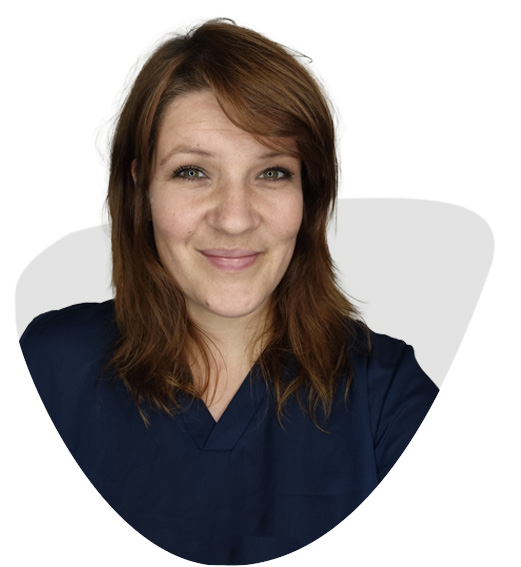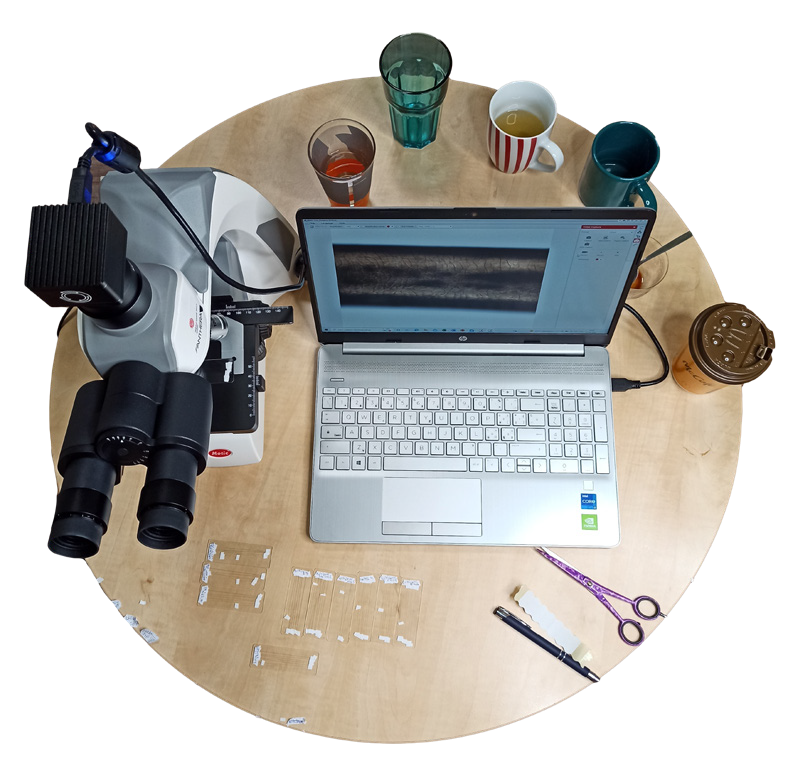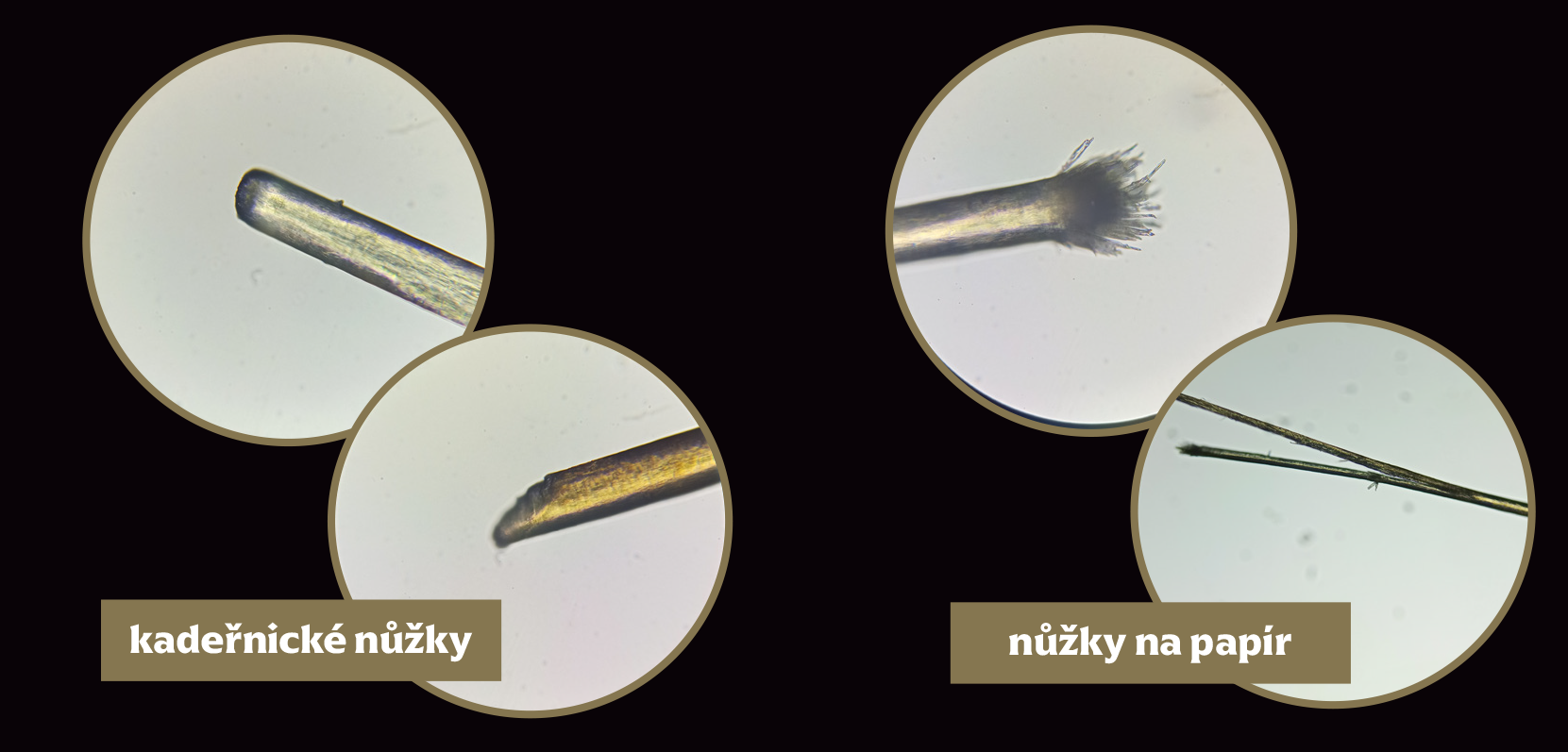Ivana Rinchenbachová

She is known for focusing a lot on hair microscopy on her Instagram profile, exploring how various products and processes affect hair structure. This almost scientific approach to hair brings a lot of new information that we can apply in daily salon work. Our PR manager Natalia talked with Ivana to find out how it all started and how looking through the microscope changed Ivana’s approach not only to her clients' hair but also to her own.

In the Czech Republic, you are unique in examining hair under the microscope and dedicate a significant part of your Instagram content to it. How did you get started with microscopy and how did this topic even come to your mind?
I found out about it a few years ago when I saw a video with Nina Krajčo talking about hair microscopy, and I got really excited. I thought it was a great idea and something I definitely wanted to do, but back then it seemed like an unattainable and totally unrealistic thought. By chance, my mom was there, who always supported me a lot at work, and she came up with the idea that the whole family would pitch in for my first microscope as a Christmas gift. Then I dived right into it. I immediately took samples from my family and started my first hair examinations. That was in 2017.

So you have been examining hair under the microscope for over 6 years, and you still enjoy it — is there still more to discover?
Yes, every time I think I’ve seen everything and there’s nowhere else to go or discover, a new impulse comes along and reveals something new. Very often I decide to examine a certain thing, and the result shows something completely different. For example, I was recently testing UV radiation on hair and discovered something else very interesting: a difference appeared between natural and cosmetic pigments in hair, which I hadn’t planned to examine.


What did you find out about the pigments?
Originally, I tried to map the damage caused by UV radiation. We generally know it’s harmful to hair, and I wanted to see if any visible changes would appear on the hair. I prepared many different samples — natural hair, dyed hair, hair with toner — and divided them into two groups. For one group, I used products with UV protection, and the other group had none, then exposed them to sunlight. Of course, a difference appeared between the samples with and without UV protection, which I expected, but what surprised me was that pigment disappeared much faster from untreated natural hair than the cosmetic pigment in dyed hair. I didn’t expect that at all because usually fading color is a concern for clients with dyed hair, while clients with natural hair don’t worry about it and often don’t use UV protection. Yet natural pigment fades faster from the sun than toner or dye.

That’s the freshest discovery. Do you remember what the very first one was? What surprised you at the start of your microscopy work?
The very first big experiment was when I tested whether you could see a difference between hair cut with paper scissors versus professional hairdressing scissors. I had read in some discussion that going to a hairdresser for a haircut was pointless and people could safely cut their hair at home. So I tested cutting hair with two different tools on one of my hairs and immediately saw a huge difference. I posted the results in a Facebook group, but didn’t have much success because women argued that they used new office scissors just for cutting hair (so they should be sharp enough) and thus hair shouldn’t be split. So I did more testing, bought brand new unused office scissors, and cut half my head with those scissors and the other half with professional hairdressing scissors. I was also interested in how the hair would behave immediately after cutting and over a longer period. After three weeks, I took samples from both sides and saw a huge difference.


It’s clear that you not only enjoy it, but it brings lots of information about hair. What has enriched you the most over the years?
When I started examining in 2018, I was surprised at how little information there was about the structure and composition of hair. The whole first year, I just looked through the microscope but didn’t know what I was seeing — different structures, dark black spots, and so on. I couldn’t find explanations anywhere. I was very interested in how hair behaves in different situations, especially to know what I could allow in my hairdressing practice. Also, how to approach hair during chemical treatments to preserve its quality as much as possible. For example, I was enriched when I mapped that there are longitudinal cracks and transverse cracks in hair, and there is a big difference between them. Longitudinal cracks often occur from chemical damage, while transverse cracks mostly happen in clients with untreated hair due to lack of care and mechanical stress. That helped explain why clients with natural hair often have breaking ends. When I know this, I can better explain it to clients and set up appropriate care.

So you also use microscopy to customize at-home care ``` for clients?
Exactly, when I examine the hair, I can see the actual damage and then recommend the right product to clients. For example, some have hair that looks healthy at first glance, but microscopy shows a lot of splits or cracks. Then I don’t recommend aggressive treatments or shampoos with harsh detergents. For some clients, the right shampoo and conditioner can make a big difference, while for others with severe damage, I might advise intensive care with masks and serums. It’s always about individualizing the approach and explaining the state of hair to clients so they understand why I recommend certain products.


Do you also look at your own hair under the microscope? Did microscopy change how you care for your hair?
Yes, of course. I started to care for my hair more consciously. I learned what my hair needs and what it doesn’t tolerate. Before microscopy, I used products based on what was fashionable or recommended, but now I know my hair better. I avoid aggressive chemical treatments and use products that nourish and protect. I also realized the importance of mechanical stress — combing gently and not using excessive heat. Microscopy changed my approach completely.

Do you think that hairdressers in general should pay more attention to hair microscopy and use it in salons?
Definitely, it would be a great tool to understand hair better. It helps explain to clients why certain products or treatments are necessary. It also motivates clients to take better care of their hair. Unfortunately, many hairdressers don’t know much about microscopy or don’t have access to microscopes. I believe it could raise the professional level of salons and improve communication with clients. I encourage all hairdressers who want to deepen their knowledge to try microscopy.


How do you see the future of hair care and microscopy? Do you plan to develop this field further?
Yes, I want to continue researching and sharing my findings with the public. I also want to collaborate with salons to introduce microscopy more widely. The future is definitely in understanding hair at the microscopic level because that’s where the true condition of hair lies. I hope more people will realize the importance of science in beauty care.
